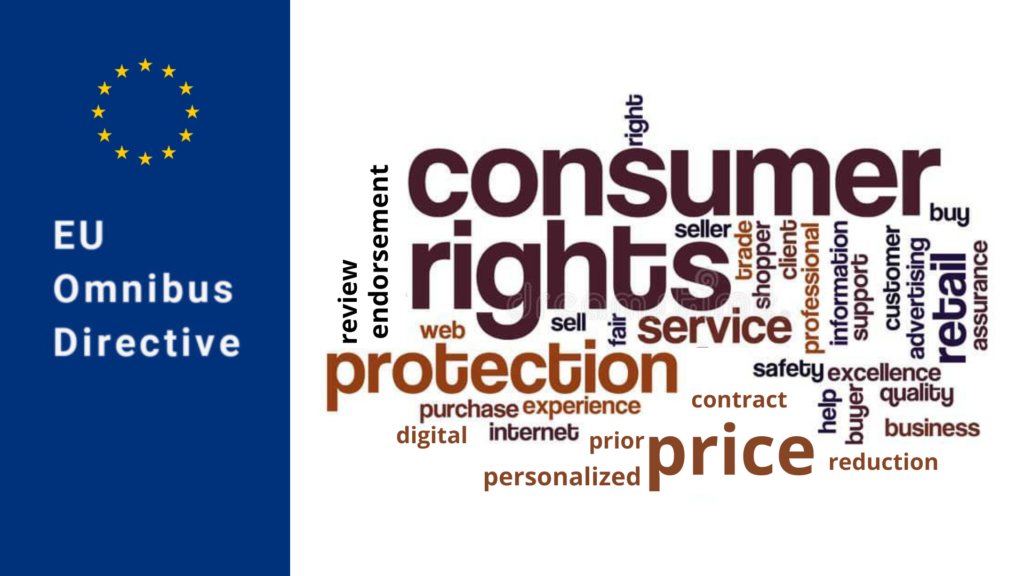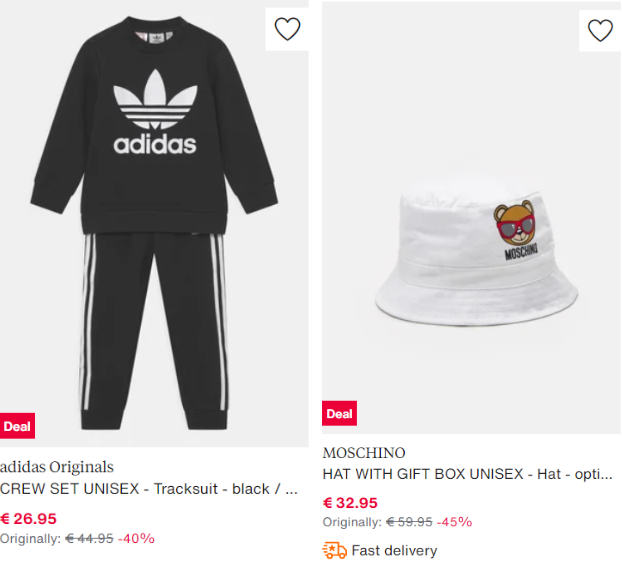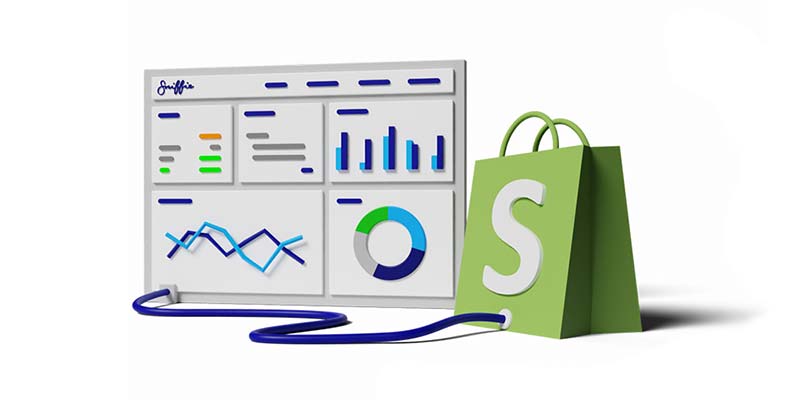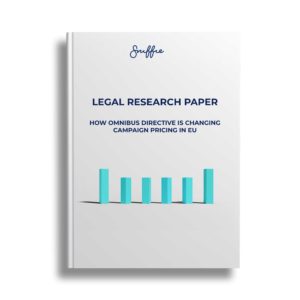A promotional pricing strategy is a popular way that many retailers or manufacturers use to generate quick demand for their products or services. Whether you’re a business owner or a pricing staff, this article will help you become more comfortable with promotional pricing planning. Moreover, the article will teach you how to use promotional pricing strategies while fully complying with the new EU Omnibus Directive. Please use the below chapter links to go to your sections of interest:
What is a promotional pricing strategy?
A promotional pricing strategy takes place when a seller reduces the price of a product or a service for a short time to attract more customers and increase sales.
Promotional pricing should not be mixed with penetration pricing. Promotional pricing is used to increase short-term sales volume or reduce excess inventory in a short time period. In contrast, the penetration pricing strategy is used to gain market share for a new product in a new market in the long run. If a company uses promotional prices to launch a new product or to penetrate into a new market, promotional pricing is a specific type of penetration pricing.
What are the examples of promotional pricing strategies?
Let’s look at some common promotional pricing strategies and see how they work.
- Price discounts: This is probably the most popular promotional pricing approach. Products are offered at a discounted price or percentage, such as 20% off or €20 off from the regular price. This approach can attract price-sensitive consumers during a peak season or during a new product launch.
- Loyalty programs: It can be five to 25 times more costly to acquire a new customer than to retain an existing customer for a business. Loyalty programs can create a sense of exclusivity for frequent customers and promote their brand loyalty. An airline mileage program is a great example of a loyalty program. When customers can collect more points to upgrade to a higher tier and get more benefits.
- Buy one, get one free (BOGOF): Companies offer a free product to increase the purchases of another product. Usually, the free product is identical but cheaper than the purchased item. There are different ways of using BOGOF: Typical examples include “Buy two get the third one for free”, “50% off for the second item” or “Buy three for the price of two”. Supermarkets or pizza companies like Domino’s Pizza often use this BOGOF approach.
- Coupons: Discount coupons or vouchers can be promoted online, in newspapers or magazines, or at the store when customers purchase a particular product. After a coupon, customers can exchange them for discounts or other benefits at related merchants. For example, Mastercard offers coupons for customers to redeem on travel tickets, taxi rides, shopping, or more.
- Seasonal sales: Businesses offer discounts during the time that is relevant to the target customers. Seasonal-specific products or services often use this promotional pricing to promote sales during high or low seasons. For example, Old Navy offers a seasonal deal for back-to-school clothes to encourage customers to buy more. The hotel business is also known to offer attractive discounts during their low seasons when the holidays end to attract more customers.
- Flash sales: Flash sales are the promotions when businesses, frequently in eCommerce or retail, offer heavy discounts on their products or services within a short time. The sale typically lasts for 24 hours or consist of a limited number of units. This strategy works when a business wants to generate quick demand and drive rapid results. Flash sales use strong messages like “act fast” or “this offer won’t last long!” to create a sense of urgency. One famous example of flash sales is Black Friday where many products are offered significant discounts only on that day.
What are the advantages and disadvantages of promotional pricing?
Promotional pricing strategies bring both advantages and disadvantages.
Advantages:
Advantage 1: Increased customer traffic.
Advantage 2: Revenue growth.
Advantage 3: Liquidate out-dated inventory quickly.
Disadvantages:
Disadvantage 1: Significant fall in prices makes consumers question the quality of products.
Disadvantage 2: Creates price sensitivity.
Disadvantage 3: Undermines business.
From our earlier blog post, you can find a more comprehensive listing of the advantages and disadvantages of promotional pricing strategies.

How can you apply promotional pricing strategies effectively and legally?
What is the new EU Omnibus Directive and how does it relate to promotional pricing planning?
The new EU Directive 2019/2161 –also known as the Omnibus Directive – is enacted on the 28th of May 2022. The Directive introduces many changes in four pieces of customer protection legislation:
- The Consumer Rights Directive (2011/83/EU)
- The Price Indications Directive (98/6/EC)
- The Unfair Contract Terms Directive (93/13/EEC)
- The Unfair Commercial Practices Directive (2005/29/EC)
The Price Indication Directive (98/6/EC) establishes common rules for consumer protection in the indication of the prices of products offered to consumers. In particular, it sets the rule for traders to display the lowest price offered within the last 30 days when applying the new price reduction (see article 6a). Traders should also inform consumers when personalized pricing applies to the customer based on automated decision-making. Failure to comply with this regulation, the traders can get a fine of up to 4% of the annual turnover in the EU or 2 million euros if the information on revenue is not available.
How can you apply promotional pricing strategies compliantly?
- Before planning the promotional pricing, review and ensure that all historical prices have been available at least 30 days before the promotional date.
- If you currently use personalized pricing disclose the information on your listings that are available to your customers.
- Please note that this rule applies only to goods, not to digital content and digital services.
- See some examples of Zalando following the EU Omnibus Directive: the average price in the past 30 days was listed in the original price, next to the current promoted price.


Only for Shopify stores
Keep your pricing compliant with EU’s Omnibus Directive.
The Omnibus Pricing App tracks the running 30-day lowest price point and automatically considers discount codes to make sure your sale price is always shown with the right 30-day lowest price.
+ 14 day free trial!

Our solution for Omnibus compliant pricing
Our pricing campaign tool already collects each price point of our customers’ products every day which makes it quick and simple to show Omnibus prices in your online store.
Discount coupons, discounts codes or vouchers have raised a lot of discussion related to the directive. How do we deal with these coupons?
- Regardless of market, we take into account discount coupons and coupons that are generally accessible (i.e. not private coupons).
- We may be able to get the information about your discount coupons via integration, or if not possible, a copy can be added via our UI.
- Any time coupons are added / deleted or coupon-to-product relations are edited, we recalculate the omnibus price for your product(s).
- Coupons that apply for normal priced products only, as well as for all products are taken into account separately.
- Coupons can be global (i.e. applied to all products) or for selected products only.
- If you are using Sniffie’s pricing module, you are able to select Omnibus price (with coupons or without coupons) as an option when scheduling price pushes.
- Since we provide information for all products with and without coupons taken into account, it’s up to you to select which price(s) you show on your online store. This depends on the country you operate in. Read our Omnibus Ebook below for a quick start on how different countries have applied Omnibus directive in their own legislation.
Legal Research Paper on Omnibus Directive and Pricing
We gathered a legal research project and you are able to get further information by downloading the ebook from the below link.

To apply promotional pricing strategies effectively:
You should think carefully about how promotional pricing affects your brand besides the short-term revenue growth. Excessive promotional pricing or a poor implementation might devalue your brand. To plan it well, you should answer this checklist of questions:
What is your promotional pricing goal?
You can consider several goals: generating quick demand, creating buzz around a new product, rewarding loyal customers, boosting short-term sales, increasing customer traffic. Determining the goal will help you select the suitable promotional pricing type.
What is your target customer segment?
If you target the wrong type of customer, your customer churn rate probably increases. Therefore, you should limit your promotions to customers who value your products. Proper promotion can help them make additional purchases and hopefully increase their customer lifetime value.
Does promotional pricing align with your brand positioning?
If you sell a premium brand like Apple, you should apply promotional pricing at a particular time of the year, such as laptop promotion during the back-to-school season. However, some brands aiming for low pricing strategies like Walmart, will need to apply for promotions as one of the core brand activities frequently.
Is it the timing right to apply a promotion?
For example, the promotion of winter shoes in the summer does not work due to their irrelevance to customers’ demands.
Does your promotional pricing plan fit with other marketing activities, such your advertising efforts?
If the promotion is done without advertising it, it is hard to succeed. Therefore, the promotion should be planned together with other marketing communication activities like billboards, flyers, and signs in your storefront or banners on your website.
Do you have a measurement plan that will lead to understanding and evaluation of the promotion campaign’s performance?
Some related measurements include the customer acquisition cost (CAC), the total cost of the promotional pricing campaign (including discounts and advertising), the percentage of new customers, increased revenue versus pre-promotion purchase, and more. Set the target of incremental revenue, promotional budget, number of new customer acquisitions, or other necessary goals, then compare the actual results to see if you can achieve those targets or not. To do this evaluation effectively, you should maintain valuable data on both sales and consumers’ purchasing behaviours.
Is your promotional pricing going to cast doubt upon the perceived value?
Customers love a great deal and attractive promotions to get the most for their money. However, if you apply a substantial discount (i.e., more than 50%) that can make the customers doubt the products’ value or quality, they will not purchase your promoted products.
What is the impact of promotional pricing on your long-term relationship with customers?
If the customers keep returning as loyal customers, your promotion was successful. If they do not come back until you offer another sale, you need to review your promotion plan and change the approach. Otherwise, you may lose your existing customers because they get used to your promotion and have some price orientation.
What are your competitors’ promotional activities?
Research the market and competitors, then consider if your promotional pricing plan is good enough to generate more consumer demand or quick results without harming your long-term goal.
In summary, a successful promotional pricing strategy is to help you to acquire and retain high-value customers in the long run, not to gain only short-term revenue.
And as always, if you have any questions about promotional pricing strategies, don’t hesitate to contact us – We’re more than happy to help!
The Sniffie team.
Learn more about e-commerce pricing
All things e-commerce pricing & price optimization right in your inbox. No spam.


